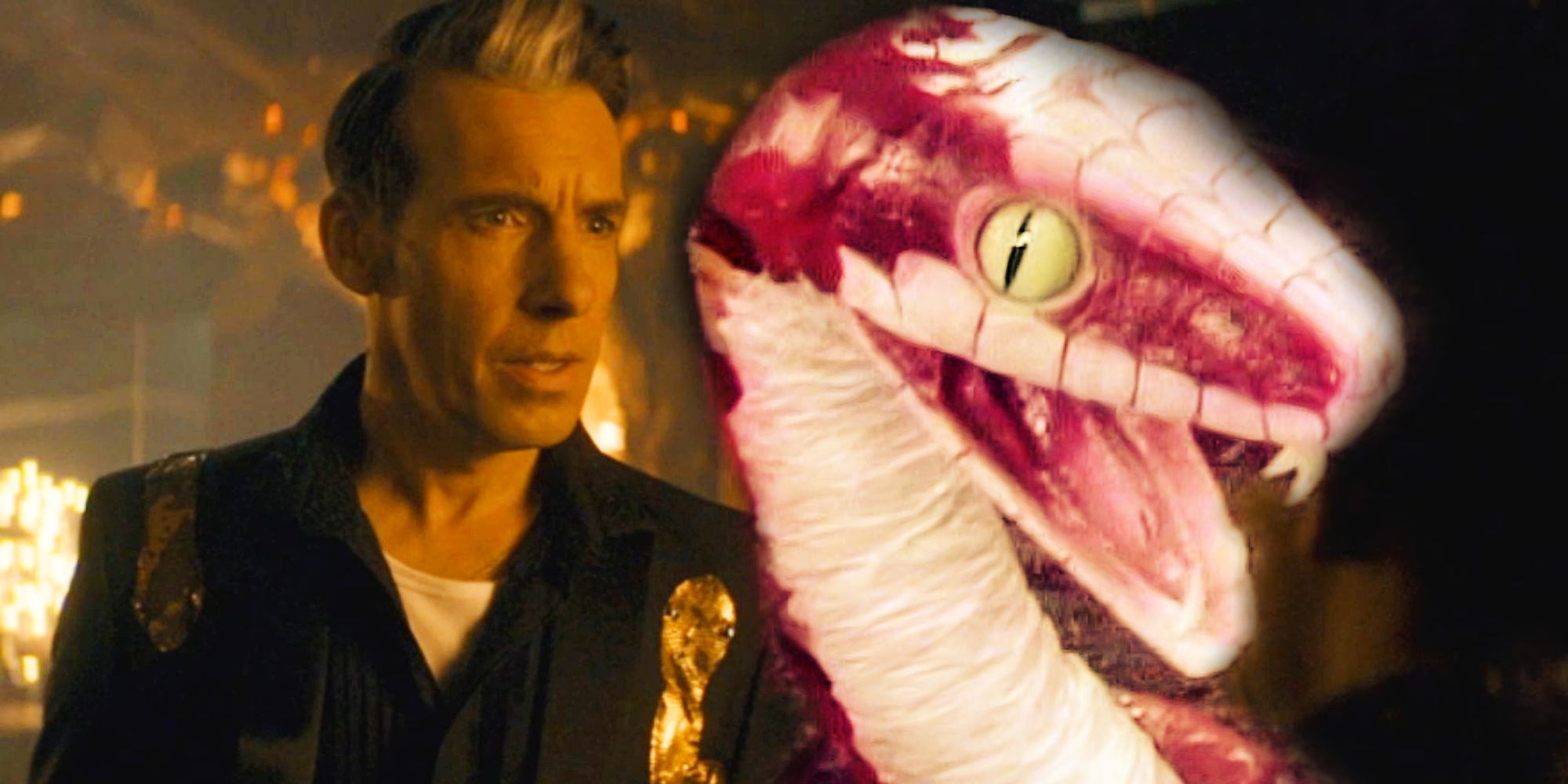Doctor Who: Flux has introduced an enigmatic new villain known as the Grand Serpent, but the character may be hiding a secret classic Doctor Who origin. One of the most notable aspects of season has been its revival of the popular serialized Doctor Who format, made famous during the show's original inception. However, if the origins of the Grand Serpent are as they seem, the structure may not be the only connection to the program's previous era.
Doctor Who: Flux is the 13th season of the long-running science-fiction series. Flux employs a new structure for the revived series, telling a single story spread across six episodes. It will be the last full season for both Jodie Whittaker and showrunner Chris Chibnall who are set to leave the series after a run of specials in 2022. One of the most mysterious elements of Doctor Who: Flux is a character known as The Grand Serpent. Played by Craig Parkinson, the Grand Serpent is a former political figure who previously controlled the space fleet of which Vinder was a part. Later seen on Earth infiltrating UNIT, the character’s background and motivations remain shrouded in mystery.
Based on both his appearance and powers, the Grand Serpent appears to be a new incarnation of the classic Fifth Doctor villain, The Mara. With so many aspects of the Grand Serpent’s story and motivation left a mystery, it makes sense that the series is heading for a last-minute reveal. Since Chibnall’s run has already had its surprise Master return, Chibnall may be digging further into The Doctor’s past for the Grand Serpent’s secret identity.
First seen in the Classic Doctor Who series 19, serial 3, “Kinda,” The Mara was encountered on the planet Deva Loka. The Mara is a gestalt entity from another plane that lives in the minds of its victims but also manifests physically as a snake-like creature. The Fifth Doctor would clash with the Mara yet again in season 20, serial 2, “Snakedance.” In addition to a number of appearances in the extended universe, these two encounters established the Mara as one of The Fifth Doctor’s greatest foes, and the perfect pick for a returning Classic Doctor Who villain.
In addition to the obvious serpentine themes, The Grand Serpent shares a number of similarities to The Mara. In the revived Doctor Who series, season 13, episode 5, “Survivors of the Flux” revealed that the name Grand Serpent is more than just a title, showing a snake-like creature projecting from the villain’s body. The same episode also showed a number of the Grand Serpent’s underlings having snake tattoos. The Mara branded its victims with similar tattoo-like marks when it was hiding in their minds. While some of the particulars seem different, The Mara is capable of taking many forms, one of which may just be the Grand Serpent.
While a twist reveal of a villain not seen in televised Doctor Who since 1983 might seem unlikely, Chibnall has already demonstrated a habit of drawing from the classic series. In season 13, episode 1, “The Halloween Apocalypse” Chibnall referenced Nitro-9, a type of explosive favored by Classic Doctor Who companion, Ace. Much of Chibnall’s vision for Doctor Who seems modeled after the Fifth Doctor’s TARDIS team, and Flux itself appears to be inspired by the Sixth Doctor’s “Trial of a Time Lord” arc. While the reveal might be surprising for some, the Grand Serpent turning out to be The Mara would fit perfectly in Doctor Who: Flux.


